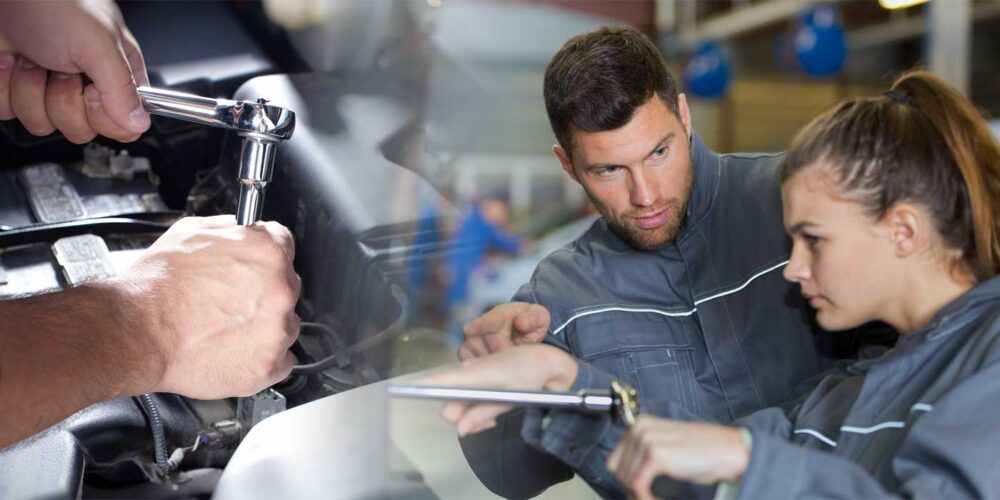After spending the last 18 years working with hundreds of dealerships all across our country, I have discovered an amazing phenomenon infecting fixed operations. You could compare this phenomenon to cancer. The good news is this cancer is 100-percent curable for every single dealer who really wants to be cancer free.
Finding the Cure
The cancer within is called “Lack of Accountability.” Yet in virtually every dealership, I find maximum accountability for everyone’s performance in the sales departments.
But when I cross into the service and parts departments, I find a total lack of accountability with the exception of technicians who are usually held accountable for their performance due to their flat rate compensation plan. Let’s look at some examples.
Is Your Dealership Infected?
Most dealers would fire a used car manager who had $50,000 in used inventory over 12 months old, yet their parts manager can have $50,000 in obsolete inventory over 12 months old and the dealer says, “He’s been a good employee and he will sell it someday.” Really?
Most dealers would not tolerate salespeople with a 10 percent closing ratio, yet they continue to employ service advisors averaging 1.0 customer pay hours per repair order and the dealer says, “I can’t find anyone who can do any better.”
Most dealers would not tolerate a finance producer who averages $250 PRU but a service director averaging 60 percent one-item retail repair orders has a job for life because “the customers like him.”
Diagnosing with “Accountability Math”
If you have the misfortune of being a dealer infected with this cancer, then I ask you to consider this mathematical formula:
3 X 5 X 500 = 20,000
Now, if you are using conventional mathematics you are most likely going to try to convince me the actual answer should be 7,500 versus 20,000. However, I’m not using conventional math, I’m using Accountability Math.
The “3” represents three of the most important controllables when profitably managing a service and parts department:
1. Hours per repair order
2. Labor gross profit margin
3. Parts gross profit margin
The “5” represents the improvement factor in these three controllables that most of you can realize starting today if you decide you want to get cured:
1. Add .5 hours per retail repair order
2. Add 5 percentage points to your labor gross profit margin
3. Add 5 percentage points to your parts gross profit margin
The “500” equals the number of retail repair orders written in a given month, which is probably very close to what many of you are currently producing.
The “20,000” is the total additional gross profit dollars produced by increasing the three controllables on 500 repair orders as outlined above.
Do I have your attention yet? This requires no advertising, no more fixed or semi-fixed expenses, just accountability for one’s performance. Let’s look at each one individually.
Hours Per Repair Order
Hours per repair order nationally are going down for far too many dealers. I see most dealers averaging between 1.0 and 1.3 HPRO. I see more and more averaging .6 to .9. What’s up with that? The answer is quite simple: “There’s no selling going on.”
Why do you allow your service advisors, writers, ASMs or whatever you like to call them, become clerks? Most of you have the opportunity to raise your sales by .5 HPRO starting today if you’re ready to start your cancer treatments. It’s called process change with accountability for performance.
Do you expect your finance producers to make a menu presentation to 100 percent of your sales customers? If so, then require your service advisors to make a maintenance menu presentation to 100 percent of your service customers.
Labor Gross Profit Margin
In reviewing thousands of financial statements in our workshops, I find that most dealers’ retail labor gross profit as a percentage of sales is averaging around 70 percent or less. Your benchmark needs to be 75 percent so there’s your additional five percentage points in labor gross.
It amazes me how many dealers have a higher margin on internal and warranty labor sales than they do on retail. Now think about that for a moment — your used car manager and your manufacturer are paying a higher price than your retail customer. Does this make any sense to you?
Please, get out there and get that extra five points in margin. All you need to do is hold your service director/manager and advisors accountable for “unauthorized discounts” and your margin will go up starting today. I bet your used car manager is on my side with this one.
Parts Gross Profit Margin
Additionally, I see these same “unauthorized discounts” with parts sales and that’s why your retail parts gross profit as a percentage of sales is averaging around 35 percent. If you simply follow your factory pricing guides, you will most likely average closer to 40 percent. With a good parts pricing matrix, you can take it up to 45 percent and now you have your additional five percentage points in parts gross. This, of course, would not apply to items like tires and accessories, but chances are those two items do not account for the majority of your sales.
A Simple Cure
This is a very simple three-step fix if you’re willing to hold everyone accountable for maintaining the 45 percent margin.
To summarize:
- An effective labor rate of $75 @ 75 percent margin
- A parts to labor sales ratio of 80 percent @ 45 percent margin
- Add .5 HPRO to 500 repair orders
The actual gross profit improvement per controllable amounts to about $31 per repair order for every additional .5 HPRO, $5.60 per repair order for an additional five points in labor margin and $4.50 per repair order for an additional five percentage points in parts margin for a grand total profit improvement of $41.10 per repair order. For every 500 repair orders that equals over $20,000 per month in gross profit or about $240,000 per year.
Do you like that math? If so, then you are ready to start the cure.














